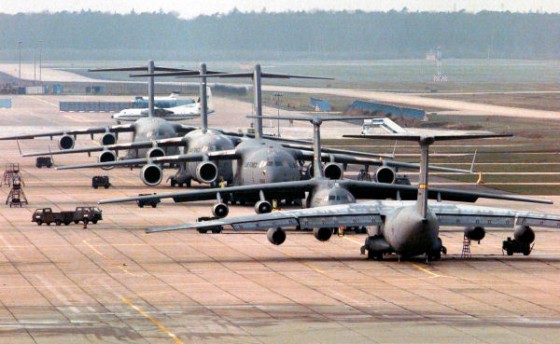By the evening October 9, 1973, President Nixon ordered the commencement of Operation Nickel Grass, the American airlift to resupply the Israelis of military equipment lost in the war.
Summary
On October 6, 1973, Egypt and Syria launched a surprise attack on Israel to reclaim territories they had lost in the Six-Day War.
With Israeli troops seriously outnumbered and facing near-certain defeat at the hands of the Soviet-backed Arabs, President Nixon ordered an emergency airlift of supplies and materiel. “Send everything that will fly,” he told Dr. Henry Kissinger. The American airlift enabled Israel to launch a decisive counterattack that pushed the Egyptians back across the Suez Canal.
When the Soviet Union threatened to send its own military into the fray as peacekeepers, the Nixon administration ordered the U.S. defense posture to DEFCON 3 for the first time since the Cuban Missile Crisis. The Soviets backed down.
President Nixon dispatched Dr. Kissinger to the region to negotiate a peace agreement. By October 24, a tentative ceasefire was in place.
By May 1974, disengagement agreements between Israel and both Egypt and Syria had been negotiated with the help of the Nixon administration. These agreements became the foundation for the Camp David Accords in 1978 and the subsequent Egypt-Israel Peace Treaty of 1979.
Facts about the Yom Kippur War
On October 6, 1973, Egypt and Syria launched a surprise attack on Israel. The CIA has since admitted that this was a massive intelligence failure.
On October 12, 1973, President Nixon ordered an airlift of supplies and materiel to Israel to resupply Israeli losses. This would be the largest airlift in American history, larger than the Berlin Airlift.
Israel claimed victory three weeks after the initial attacks.
When the Soviet Union upped the stakes by threatening to send troops to the region, the Nixon administration took the U.S. defense posture to DEFCON 3 for the first time since the Cuban Missile Crisis, and the Soviets backed down.
The Yom Kippur War was the bloodiest military confrontation between Israel and its Arab neighbors totaling nearly 53,500 total casualties on all sides involved. This is compared to 5,500 casualties during the 1967 Six-Day War, and 10,000 casualties during the 1956 Suez Crisis.

